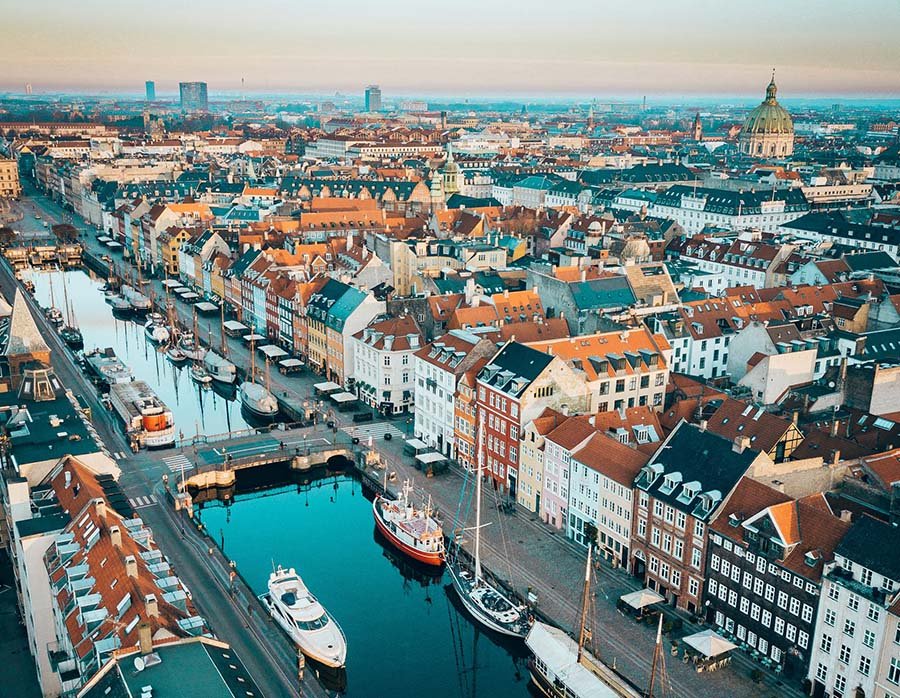читайте также
 The Future of Five-Star Hotels: Global Trends
The Future of Five-Star Hotels: Global Trends
 Golden Visas of Oman: New Programs for Investors and Pensioners
Golden Visas of Oman: New Programs for Investors and Pensioners
 U.S. Housing Trends: Young Adults Choose Renting
U.S. Housing Trends: Young Adults Choose Renting
 ADB Allocates $360 Million for Batumi–Sarpi Road Construction
ADB Allocates $360 Million for Batumi–Sarpi Road Construction
 China Eases FX Restrictions in the Housing Market
China Eases FX Restrictions in the Housing Market
 Best Cities in the World to Live in 2025
Best Cities in the World to Live in 2025
Japan’s Real Estate Market in 2025

What’s happening in Japan’s real estate market? Are property prices rising or falling? Is Tokyo still a magnet for international investors? How are Japanese government policies and tax changes reshaping the real estate landscape in 2025?
The answers can be found in a new research report by consulting firm Bamboo Routes, which specializes in real estate investments across the Asia-Pacific region (Japan, Thailand, Indonesia, Australia, and others).
Real Estate Prices in Japan Show Signs of Stabilization
Residential property prices in Japan are showing signs of stabilization as the market adapts to post-pandemic conditions. In 2024, the national residential property price index rose by just 2.4% year-on-year. This is a significant slowdown from the 4.8% increase in 2023, suggesting that the era of rapid price growth is over. This trend is especially evident in urban markets like Tokyo.
In Tokyo, housing demand is cooling. Apartment sales dropped by 9.8% in 2024, while detached house sales fell by 12.2%. This decline is reflected in the decrease in the number of new multi-family buildings under construction. However, this balance between supply and demand is necessary to maintain price stability and provides buyers with a more predictable market.
Government initiatives are also playing a role. The Ministry of Land, Infrastructure, Transport and Tourism is working to bring abandoned houses back into the market. This strategy not only addresses the problem of unused property surpluses but also helps better regulate the total housing supply, supporting price stabilization.
Slowing price growth and proactive government measures are creating a more balanced market. This attracts investors who are not chasing short-term gains but instead seek long-term goals, market stability, and predictability.
Main Trends in Japan’s Real Estate Market in 2025 – A Comprehensive Market Analysis

What is currently happening in Japan’s real estate market? Are prices rising or falling? Does Tokyo still attract international investors? How do Japan’s government policies and tax structures shape the real estate landscape in 2025? The answers to these questions are found in a new study by consulting firm Bamboo Routes, which specializes in real estate investment in Asia-Pacific countries such as Japan, Thailand, Indonesia, Australia, and others.
Prices in Japan Are Stabilizing
Residential real estate prices in Japan are showing signs of stabilization as the market adjusts to post-pandemic conditions. In 2024, the national housing price index increased by only 2.4% compared to the previous year. This marks a notable slowdown from the previous 4.8% growth rate and indicates that the era of rapid price hikes may be over. The trend is especially visible in urban areas like Tokyo.
In Tokyo, housing demand has cooled, with condominium sales dropping by 9.8% and single-family home sales falling by 12.2% in 2024. This decline is also reflected in the reduced number of new multi-unit developments. However, such a balance between supply and demand is essential for maintaining stable prices, offering prospective buyers a more predictable market environment.
Government initiatives are also influencing the market. Japan’s Ministry of Land, Infrastructure, Transport, and Tourism is addressing the issue of abandoned houses by reintroducing them to the market. This strategy not only tackles the surplus of unused properties but also helps manage the overall housing supply more effectively, contributing to price stability.
The slowing price growth combined with active government measures is creating a more balanced market, which is attracting investors seeking long-term gains, stability, and predictability, rather than quick profits.
Sources: Global Property Guide, E-Housing Japan
The Weak Yen Is Making Real Estate More Affordable
Foreign buyers are increasingly turning to Japan's real estate market due to the weakening yen, which has made property significantly more affordable this year.
In 2024, foreign investment in Japanese real estate reached $10.2 billion, a sharp increase compared to the previous year. In just the first half of the year, foreign investment jumped by 45%, largely driven by the weak yen. This trend is evident as more international real estate agencies report a surge in inquiries, with many Japanese property owners actively seeking foreign buyers.
The depreciation of the yen has made Japanese real estate cheaper, attracting more international buyers. At a favorable exchange rate of 130 yen per US dollar (compared to 110 in previous years), the cost in USD drops substantially. This currency advantage is often highlighted in the media, portraying Japan as a hot spot for real estate investment.
Foreign investors aren’t just looking at the numbers—they see Japan as a stable market. The current weakness of the yen is viewed as a temporary window of opportunity for those looking to diversify their investment portfolios or take a long-term position, betting on a recovery of the Japanese currency in the coming years.
Japan’s real estate market is also attractive thanks to its reliable infrastructure and high quality of life, particularly in cities like Tokyo and Osaka. As long as the yen remains weak, the foreign interest is expected to persist.
Sources: https://www.globalpropertyguide.com/asia/japan/price-history, https://e-housing.jp/post/2025-japan-property-market-insights
Rental Yields Are Rising in Tourist-Heavy Kyoto
Tourism in destinations like Kyoto is steadily rebounding post-pandemic. In March 2024 alone, Japan welcomed over 3 million international tourists—a massive leap compared to the previous year. While seasonal, this surge is a clear sign of the sector’s recovery. As tourism returns, demand for short-term rental properties is also rising.
Kyoto’s short-term rental market is thriving, with an average occupancy rate of 80%. Many properties are booked year-round, demonstrating that apartments here can rival traditional hotels in terms of profitability. Such consistent occupancy is rare globally, making Kyoto a standout market.
Japan’s National Tourism Organization expects tourist arrivals to surpass pre-pandemic levels by 2025. As tourism strengthens, investing in rental property in tourist hotspots like Kyoto could become a smart move. The city’s rich culture and historical charm guarantee a steady stream of visitors and potential tenants.
Sources: Japan Times, Airbtics, Nippon
Tokyo and Osaka Remain Profitable Long-Term Investments
Foreign investors are targeting properties in Tokyo and Osaka for their stable returns and long-term growth potential. In 2024, Tokyo property prices hit an all-time high, with further growth forecasted for 2025, driven by urban development and infrastructure upgrades.
Rental yields in these cities average around 3.5%, comparable to major global cities. Japan’s economy may not be booming, but it’s stable enough to provide a solid backdrop for real estate investments.
Foreign direct investment in Japan’s property market surged in 2024, although Singapore still leads in the region. This spike is supported by government policies easing market access for foreigners, including regulatory and tax incentives.
Investor confidence is further boosted by growing interest from Hong Kong, Singapore, South Korea, and Taiwan. Japan’s government is actively working to attract more foreign capital. With tourism projected to return to pre-pandemic levels in 2025, there’s optimism across both residential and commercial property sectors.
Sources: Housing Japan, Savills, E-Housing
Higher Rental Yields in Regional Markets Expected
Provincial cities in Japan are becoming increasingly attractive to remote workers and young families. In 2024, cities like Fukuoka and Sapporo posted strong rental yields: 4.72% in Fukuoka and 5.56% in Sapporo. This trend underscores the growing interest in non-metropolitan areas for real estate investments. Part of this appeal stems from the rise of remote work among Japanese employees seeking more space and lower living costs outside the big cities.
A MailMate survey showed that 61.2% of Japanese workers prefer jobs with remote work flexibility. This preference is prompting many to consider regional cities, where they can enjoy a more relaxed lifestyle. Young families are also drawn to these areas in search of better quality of life and more room for their children.
An increase in school enrollments across regional towns points to a population shift away from major urban centers. The Japanese government is supporting this move by investing in regional revitalization projects, including infrastructure upgrades that make these cities more livable and attractive.
As a result, regional cities in Japan are not only becoming more comfortable places to live, but also more profitable for real estate investors.
Sources: Global Property Guide, MailMate
Demand for Smaller Units Among Solo Occupants Is Rising
Single-person households in Japan are on the rise, making up 34% of all households in 2024.
About 92.04% of Japan’s population lives in urban areas, with cities like Tokyo facing a shortage of available construction space. This urban density fuels demand for compact living where every square meter counts.
People are gravitating toward smaller, budget-friendly housing due to the high cost of city living. The trend is reflected in the increasing popularity of micro-apartments and capsule hotels, which offer smart, space-efficient living.
These tiny homes are more than just a fad—they’re a necessity in a country where cities must adapt to changing demographics. As more people choose to live alone, demand is shifting toward small but functional units that reshape urban landscapes.
Developers are responding with innovative designs tailored to this lifestyle, accelerating a transformation in Japan’s residential real estate market.
Sources: Nippon, Statista, Design Build
Japan’s Aging Population Is Driving Demand for Senior Housing
Japan's rapidly aging population is a key factor driving the growing demand for elderly-friendly housing and senior care facilities.
As of 2024, Japan had 36.25 million people aged 65 and over — representing 29.3% of the total population. This is the highest proportion of elderly citizens in the world. With increasing life expectancy, especially among women, the need for suitable housing options is becoming more urgent. In September 2024, Japan recorded 95,119 centenarians, highlighting a growing demographic that requires age-appropriate living arrangements.
The Japanese government is well aware of this trend and has been actively promoting the development of senior housing. Since 2013, it has introduced incentives to boost investment in elderly care homes and assisted living facilities through subsidies. The government also encourages compact urban development to ensure that senior citizens have easy access to essential services like retail stores and healthcare.
Another significant driver of demand is the growing number of elderly people living alone. Over the past decade, the number of single-person households among the elderly has increased by more than 60%. As of 2020, 20% of people aged 65 and over were living by themselves. This trend underscores the need for housing solutions that offer both community and support, reducing social isolation among seniors.
These shifts in demographics and lifestyle preferences are shaping a strong future market for elderly-focused housing, not only in big cities but also in suburban and regional areas of Japan.
Remote Work Is Fueling Demand for Suburban Real Estate Around Tokyo
The shift to remote work is reshaping residential preferences in Japan, especially in densely populated cities like Tokyo. In 2024, a survey by the Nomura Research Institute revealed that 15.3% of Tokyo workers planned to move to the suburbs within the year, while 28.4% intended to do so within the next five years. This trend reflects a growing desire for more space and affordable housing — both of which are more accessible in suburban areas than in city centers.
Suburban neighborhoods are becoming increasingly attractive due to their lower cost of living. While property prices in central Tokyo continue to rise, the suburbs offer more budget-friendly options. This affordability, combined with the desire for larger living spaces, is drawing more people to the outskirts of the capital.
The remote work trend that began during the COVID-19 pandemic remains strong. Many Tokyo-based companies have adopted flexible work arrangements, including four-day workweeks starting in 2025. This flexibility makes it more practical — and appealing — to live farther from the workplace, accelerating suburban migration.
As people rethink their living situations in light of remote work, suburbs offer an opportunity to escape the high costs and cramped quarters of urban life. They provide a more comfortable and accessible lifestyle, particularly for families and professionals looking for better quality of life.
As this shift continues, demand for suburban housing is expected to grow — not just for affordability, but also for lifestyle improvements and long-term livability.
New Tax Incentives Are Driving Interest in Eco-Friendly Homes
New tax incentives in Japan are making energy-efficient housing more appealing than ever. To qualify for the Flat 35 mortgage program, properties must now meet strict energy-saving standards. This government initiative is part of a broader push to reduce carbon emissions, and it's reshaping how developers build and how buyers choose homes.
By 2024, these standards became a key factor for mortgage tax benefits, encouraging developers to prioritize green buildings. Starting in April 2025, compliance with these environmental benchmarks will become mandatory, underscoring Japan's commitment to sustainability in residential construction.
This push is backed by increased funding and grants for eco-friendly development projects, making it easier for builders to invest in sustainable construction. The government is also promoting smart home technologies through subsidies and incentives — resulting in a steady rise in the number of Zero Energy Homes (ZEH). Since November 2020, over 7,600 ZEH units have received construction permits.
Consumer demand is also shifting. Buyers are increasingly drawn to smart, efficient living spaces that align with Japan's goals for a greener future. These eco-conscious choices are no longer niche — they’re becoming mainstream, especially as energy efficiency and smart systems enhance both comfort and long-term value.
As a result, the housing market is experiencing a noticeable transformation. Sustainability isn’t just a selling point — it's becoming a standard.
Declining Birth Rate Leads to a Surplus of Family Homes
Japan's birth rate has dropped to a historic low — the total fertility rate fell to 1.20 in 2024.
This decline means fewer families are looking for large homes, and the impact goes beyond numbers. In 2024, only 727,277 births were recorded, marking a significant drop compared to previous years. This shift is creating a ripple effect on the housing market, particularly in areas that have traditionally catered to family households.
Exacerbating the issue is the growing number of vacant homes. In 2024, Japan had approximately 9 million empty houses, with the national vacancy rate reaching 13.8%. For comparison, that rate was just 2.5% in 1963 — a stark illustration of how drastically things have changed.
Looking ahead, Japan's population is projected to decline even further, possibly dropping to 87 million by 2070. This will drive down demand for family-sized homes, especially in shrinking regional towns and rural areas. Real estate experts are already predicting an oversupply of such properties, which may lead to a drop in their market value.
For buyers, this could translate to more options and better prices — but location will be critical. Areas experiencing population decline may see sharper property devaluation, making them less attractive for long-term investment.
Understanding these demographic trends is essential for anyone considering real estate in Japan. The surplus of large family homes is becoming a key market factor to watch.
Interest in Traditional Japanese Homes Is Declining
Recently, Japan has seen a noticeable slowdown in new housing construction. With over 90% of the country’s population now living in urban areas, there's a clear shift toward city living. This trend of urbanization means more people are choosing modern apartments and condominiums, leaving behind traditional-style houses, which are typically located in rural areas.
The smart home market in Japan is booming, with significant growth expected between 2024 and 2029. This surge is driven by the increasing adoption of IoT (Internet of Things) devices, which offer convenience, energy efficiency, and enhanced security. As these technologies gain popularity, homes lacking modern features — such as traditional wooden houses — are losing their appeal.
Consumer preferences are shifting, especially among the younger generation, who prefer compact and efficient living spaces in urban settings. This trend is evident in the housing market, where modern residential properties are seeing greater demand and price appreciation. Government incentives supporting smart technologies are also accelerating this shift.
In 2024, new housing starts in Japan declined by 7.0% year-over-year, and this downward trend is continuing into 2025. The drop is particularly pronounced in the construction of detached single-family homes, many of which follow a traditional design.
As people increasingly embrace modern lifestyles, interest in traditional Japanese homes is waning. The convenience and technology offered by modern housing options are becoming more attractive to potential buyers, gradually reshaping the real estate landscape across Japan.
Fukuoka Attracts Young Buyers With Affordable Living
Fukuoka is becoming an increasingly popular destination for young homebuyers, thanks to its vibrant culture and lower cost of living compared to Tokyo.
As of 2024, the cost of living in Fukuoka averages around $1,162 per person per month, while in Tokyo it stands at approximately $1,641. This affordability offers a more accessible lifestyle, which is especially appealing to younger generations. The ability to save more money allows young people to invest in themselves — a key motivator for those seeking flexibility and independence.
The city is well-known for its lively festivals, such as the Hakata Gion Yamakasa and Hakata Dontaku Port Festival, which create a dynamic and youthful atmosphere. Fukuoka is also gaining recognition as a startup hub, supported by initiatives like the Start-up Café, which provides resources and guidance to entrepreneurs, helping build a thriving local business scene.
Social media plays a major role in promoting Fukuoka’s appeal. Online platforms showcase the city’s lifestyle and cultural highlights, making it more visible and attractive to a younger audience. This digital presence is instrumental in building interest among prospective newcomers.
Government initiatives further enhance Fukuoka’s reputation as a livable city for young professionals. These efforts encourage youth migration and help reinforce the city’s growing status as a youthful, energetic, and innovative urban center.
High-Net-Worth Buyers Seek Luxury Penthouses in Major Cities
Luxury penthouses in cities like Tokyo and Osaka are in high demand among high-net-worth individuals. In 2024, central Tokyo saw condo prices reach record highs, reflecting just how desirable these exclusive residences have become. And the trend continues into 2025.
Japan is home to a large population of wealthy individuals. While some forecasts predict a slight decline in the number of ultra-wealthy residents by 2027, the luxury real estate market remains robust. The ongoing demand for premium urban residences underscores the appeal of exclusivity and high-end amenities.
The limited supply of luxury properties in these bustling cities only intensifies competition. With few ultra-luxury listings available, prices are climbing, making these properties even more desirable as rare assets.
In Tokyo and Osaka, luxury real estate is not just about square footage — it’s about location, prestige, panoramic views, and world-class services. For affluent domestic and foreign buyers alike, owning a penthouse is a symbol of status, investment security, and lifestyle refinement.
Growing Interest in Kobe’s Real Estate Driven by International Community
Kobe has been seeing steady growth in real estate interest, and several compelling factors are fueling this trend.
In 2024, property prices in Kobe experienced a notable increase: resale condominiums rose by 9%, while new constructions surged by 42.5%. This growth outpaced other major Japanese cities. One of the key drivers behind this spike is Kobe’s active international community, which includes a number of international schools and businesses that attract expatriate professionals.
The city’s picturesque coastal location adds to its appeal. Kobe consistently ranks highly in surveys among expats and is often praised for its balance between urban convenience and natural beauty. This favorable perception is further amplified by positive media coverage and word-of-mouth within global circles.
For those considering relocation, Kobe offers the best of both worlds — vibrant city life and scenic surroundings. As interest continues to grow, Kobe’s real estate market is expected to remain strong, with continued support from its international population and desirable living environment.
Nagoya’s Strategic Location Attracts Real Estate Investors
Nagoya's real estate market is on the rise, bolstered by its strategic location and thriving industrial economy. With a top-tier logistics and transportation network—including a rapidly expanding port—Nagoya serves as a key hub for international trade. This makes it a hotspot for companies and investors looking to establish a presence in global markets.
Major brands like Toyota, Honda, and Mitsubishi call Nagoya home, fueling demand for industrial properties and logistics facilities. The city’s automotive cluster not only drives the local economy but also attracts investors interested in Japan’s manufacturing backbone.
Nagoya’s industrial strength extends beyond automobiles. It also has growing sectors in aerospace, machine tools, and advanced manufacturing, stimulating demand for commercial and service infrastructure. This diverse industrial base is a key factor in the city’s sustainable economic expansion.
Local government initiatives further enhance Nagoya’s appeal. By focusing on five priority industries and offering targeted incentives, the city is actively courting foreign businesses. The increasing presence of multinational corporations in the area reflects the rise in foreign direct investment (FDI), which in turn boosts demand in the property market.
Sapporo Emerges as a Tech Startup Hub
Sapporo is rapidly establishing itself as a magnet for tech startups and young professionals, fueling increased interest in its real estate sector.
The city is seeing a surge in investments into its technological infrastructure, driven by initiatives like Startup City Sapporo. These programs provide essential resources and foster an environment where new ventures can thrive. But it’s not just about tech—Sapporo’s diverse industries, including agriculture, tourism, and biotech, offer a rich landscape for innovation.
In 2024, Sapporo made a significant leap in the Global Startup Ecosystem Index, climbing 95 positions. This surge highlights the city’s dynamic atmosphere, which appeals to young talent and entrepreneurs. Local universities are also stepping up, offering specialized programs in fields like artificial intelligence, drawing in tech-savvy students and researchers.
The influx of young professionals is reshaping the city’s urban landscape. Co-working spaces, modern amenities, and digital infrastructure are growing to meet the demands of a new demographic. Sapporo’s tech sector isn’t just growing—it’s thriving, making the city increasingly attractive for both emerging startups and established firms.
This momentum is transforming Sapporo into a key player in Japan’s real estate market, especially for investors seeking long-term opportunities in vibrant, innovation-driven cities.
Hiroshima Attracts Attention Through Public Investment
Hiroshima is drawing increasing interest thanks to its sustainable urban development efforts. Backed by government-led green initiatives, the city is set to receive part of a ¥75 billion (approx. $500 million) investment package aimed at improving infrastructure across the Indo-Pacific region.
As Hiroshima prepares for large-scale urban redevelopment, real estate values are expected to rise. These projects go beyond new buildings—they include green spaces and energy-efficient developments. A comparable effort in Tokyo led to an annual 5–6% increase in property values, a trend that Hiroshima may soon mirror.
Environmental awareness is also playing a major role in shaping demand. Over 60% of Japanese consumers say they are willing to pay more for eco-friendly products. This shift fuels the demand for smart, energy-efficient housing—a trend already strong in cities like Tokyo and Osaka. Hiroshima is ready to ride this wave, offering sustainable living options that meet this growing demand.
The city’s green credentials are also driving tourism, further boosting the local economy and real estate market. Hiroshima’s prominent role in international sustainability dialogue—such as hosting the G7 summit—has drawn global attention and increased investor interest.
With these factors in play, Hiroshima is becoming a magnet for both domestic and international investors. The city’s commitment to sustainable growth isn’t just a trend—it’s a strategic direction with long-term benefits.
Nagoya’s Strategic Location Draws Investor Attention
Nagoya’s real estate market is gaining momentum, fueled by the city’s strategic location and thriving industrial sector. With a top-tier logistics and transportation network—including a rapidly expanding port—Nagoya has become a critical hub for international trade. This positioning makes it a hotspot for businesses and investors looking to access global markets.
Major corporations such as Toyota, Honda, and Mitsubishi are headquartered in Nagoya, driving consistent demand for industrial facilities and warehousing. This automotive powerhouse not only supports the local economy but also attracts investors seeking exposure to Japan’s robust manufacturing base.
But Nagoya’s industrial strength goes beyond automobiles. The city is also advancing in aerospace and precision machinery, boosting both trade and service industries. This diverse manufacturing environment underpins economic stability and growth, making it attractive for long-term real estate investment.
Sapporo Emerges as a Hub for Tech Startups
Sapporo is rapidly transforming into a magnet for tech startups and young professionals, driving renewed interest in its real estate market.
The city is receiving substantial investment in tech infrastructure through initiatives like Startup City Sapporo, which provide essential resources to foster a startup-friendly ecosystem. But it’s not just about technology—Sapporo’s diverse industries, including agriculture, tourism, and biotech, offer fertile ground for innovation.
In 2024, Sapporo made a remarkable leap, jumping 95 positions in the Global Startup Ecosystem Index. This surge reflects the city’s vibrant atmosphere, attracting tech talent from across Japan and beyond. Local universities are also contributing, offering specialized programs in areas like artificial intelligence, which help feed a pipeline of skilled professionals.
The influx of young professionals is reshaping Sapporo’s urban fabric, turning the city into a thriving innovation hub. New coworking spaces and modern amenities are springing up to meet the demands of this demographic.
Sapporo’s tech scene isn’t just growing—it’s thriving. That momentum is turning the city into a serious contender in Japan’s real estate market, especially among investors interested in future-forward urban development.
Local government initiatives are also paving the way for increased international business activity. By focusing on five key industries and offering strategic incentives, Nagoya is becoming an increasingly compelling destination for foreign investors.
The establishment of multinational corporate branches in Nagoya reflects the rise in foreign direct investment (FDI), further energizing the city’s real estate sector. As this growth continues, Nagoya is positioning itself as a key player in Japan’s property investment landscape.
Real Estate in Hiroshima Gains Traction Through Government Investment
Hiroshima is drawing increasing attention due to its commitment to sustainable urban development. Backed by a share of the Japanese government’s $75 billion infrastructure investment package for the Indo-Pacific region, the city is set for a major transformation.
As Hiroshima prepares for large-scale urban redevelopment, property values are expected to rise. These projects go beyond new buildings—they include green spaces and energy-efficient initiatives. Similar efforts in Tokyo have led to annual real estate price increases of 5–6%, and experts anticipate Hiroshima will follow a comparable trajectory.
Japanese consumers are becoming more environmentally conscious, with over 60% willing to pay more for eco-friendly products. This shift is driving demand for smart, energy-efficient homes—a trend already popular in Tokyo and Osaka. Hiroshima is poised to ride this wave, offering sustainable housing solutions that meet this rising demand.
The city’s green reputation also attracts more tourists, helping to stimulate both the local economy and real estate market. Hiroshima’s international profile, bolstered by its hosting of high-profile events like the G7 Summit, is drawing global attention and foreign investment.
All these factors are positioning Hiroshima as a magnet for both domestic and international real estate investors. The city’s focus on eco-conscious growth isn’t just a trend—it’s a strategic direction promising long-term returns.
Hiroshima Gains Real Estate Interest Thanks to Public Investment
Hiroshima is drawing attention for its commitment to sustainable urban development. Backed by a portion of the $75 billion government investment aimed at advancing infrastructure across the Indo-Pacific, the city is gearing up for major urban transformation.
As Hiroshima prepares for large-scale redevelopment, property values are expected to rise. These projects go beyond new buildings—they include green spaces and energy-efficient developments. Similar efforts in Tokyo have driven annual real estate price increases of 5–6%, and experts expect Hiroshima to follow the same path.
Japanese consumers are increasingly eco-conscious—over 60% are willing to pay more for environmentally friendly products. This mindset is fueling demand for smart, energy-efficient housing—a trend already flourishing in cities like Tokyo and Osaka. Hiroshima is well-positioned to ride this wave, offering sustainable living options that meet growing market expectations.
The city’s green reputation is also attracting more tourists, which can boost the local economy and real estate sector. Hiroshima’s global profile—enhanced by its role in international sustainability discussions, such as hosting the G7 summit—further elevates its appeal to investors.
With all these factors in play, Hiroshima is becoming a magnet for both domestic and international investment. Its commitment to green growth isn’t just a trend—it’s a strategic move that promises long-term real estate gains.
Strategic Location Makes Nagoya a Hotspot for Investors
Nagoya's real estate market is booming thanks to the city’s strategic location and expanding industrial sector. With a top-tier logistics and transportation network—including its continually developing port—Nagoya is a magnet for international trade. This makes the city a key point of interest for businesses and investors aiming to access global markets.
Major brands like Toyota, Honda, and Mitsubishi are headquartered in Nagoya, driving demand for industrial properties and warehouses. This automotive hub not only fuels the local economy but also draws in investors seeking exposure to Japan’s robust vehicle industry.
Nagoya’s industrial landscape extends beyond cars. Aerospace and machinery manufacturing also thrive here, stimulating trade and service sectors. This diverse manufacturing base is a key driver of economic growth and property demand.
The local government has launched investment incentive programs, focusing on five priority industries to attract international business. These efforts are transforming Nagoya into a high-potential area for real estate development.
The opening of regional headquarters by multinational companies is a sign of growing foreign direct investment (FDI) in the city, further boosting demand in the property market.
Sources: Prologis, NPTC, JETRO
Sapporo Emerges as a Hub for Tech Startups
Sapporo is rapidly becoming a magnet for tech startups and young professionals, driving renewed interest in its property market.
The city is benefiting from major investments in technological infrastructure, fueled by initiatives like Startup City Sapporo, which provide essential resources and a supportive environment for new ventures. But Sapporo’s appeal goes beyond tech—its diverse economy includes agriculture, tourism, and biotechnology, offering a fertile ground for innovation.
In 2024, Sapporo jumped 95 positions in the Global Startup Ecosystem Index. This leap reflects the city’s dynamic and fast-growing startup ecosystem, which continues to attract young talent. Local universities are also playing a role by offering cutting-edge AI and tech programs, strengthening the city’s reputation as an innovation hub.
An influx of young professionals is transforming Sapporo into a thriving innovation center. New coworking spaces and modern amenities are emerging to meet the needs of this demographic.
The city’s growing tech sector makes it attractive not only to startups, but also to established tech companies, positioning Sapporo as a rising star in Japan’s real estate landscape.
Sources: StartupBlink, XYZ Lab, Old Houses Japan
Fukuoka Attracts Young Buyers With Low Cost of Living
Fukuoka is becoming a top destination for young homebuyers thanks to its vibrant cultural scene and lower living costs compared to Tokyo.
The cost of living in Fukuoka is approximately $1,162 per person per month, whereas in Tokyo it’s about $1,641. This difference allows young residents to enjoy a more affordable lifestyle—an important factor for millennials and Gen Z buyers who prefer to spend their savings on quality of life and experiences.
The city is also renowned for its festivals like Hakata Gion Yamakasa and Hakata Dontaku Port Festival, creating a lively, youth-friendly atmosphere. Moreover, Fukuoka is establishing itself as a startup hub through initiatives like the Startup Café, which supports entrepreneurs and nurtures a dynamic business culture.
Social media plays a crucial role in promoting the city’s image. Platforms showcase Fukuoka’s lifestyle and attractions, making it more visible and appealing to younger generations.
Local government efforts to promote Fukuoka as a livable city for young professionals further increase its attractiveness, encouraging more youth to consider moving there.
Sources: LivingCost, Fukuoka Events, Fukuoka Startup Hub
Wealthy Buyers Flock to Urban Luxury Penthouses
Luxury penthouses in cities like Tokyo and Osaka are in high demand among wealthy buyers. In 2024, condo prices in central Tokyo hit record highs, showing the eagerness of buyers to acquire exclusive properties. This trend has continued well into 2025.
Japan has a significant number of high-net-worth individuals (HNWIs), and while the number of ultra-wealthy is expected to decline slightly by 2027, the luxury real estate market remains robust. Demand for upscale property in Tokyo and Osaka highlights a growing appetite for exclusive, high-end urban living.
The scarcity of luxury listings in these bustling cities only adds to their allure, further driving up prices and intensifying competition.
Sources: Patience Realty, Kyodo News, RP Realty Plus
Kobe’s International Community Drives Property Demand
Kobe is seeing growing interest in real estate for several compelling reasons.
In 2024, property prices in Kobe surged: existing condominiums rose by 9%, and new units jumped by 42.5%, outperforming other major Japanese cities. One major driver of this growth is Kobe’s international community, which includes numerous international schools and multinational businesses, attracting expat professionals.
Kobe’s scenic coastal setting enhances its charm. The city regularly ranks high in expat satisfaction surveys, and this positive image is reinforced by media coverage.
For those considering relocation, Kobe offers a rare combination of urban convenience and natural beauty. As the city continues to attract attention, its real estate market is expected to remain strong—buoyed by its global appeal and desirable location.
Sources: Global Property Guide, Fitch Solutions, Akiyaz
Подсказки: Japan, real estate, investment, Tokyo, Kyoto, Osaka, Sapporo, Fukuoka, yen, housing market, rent, foreigners, sustainability, energy efficiency, remote work, elderly care, taxes, green buildings, capsule hotels, trends





